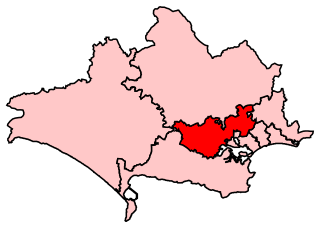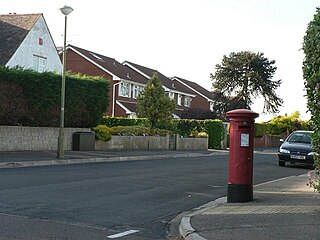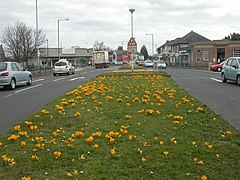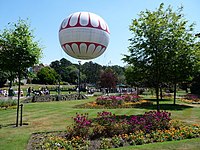
Colehill is a parish neighbouring Wimborne Minster, in Dorset, England. It had a population of 7,000 in 2001, which shrunk slightly to 6,927 people at the 2011 census.

Isaac Gulliver (1745–1822) was an English smuggler based on the South Coast. Gulliver and his gang ran fifteen luggers to transport gin, silk, lace and tea from the Continent to Poole Bay and came to control the coast from Lymington on The Solent in Hampshire, through Dorset to Torbay in Devon. He was known as "King of the Dorset Smugglers" and was also referred to as "the gentle smuggler who never killed a man". His men, who whitened their hair and wore smock-frocks, were known as the "white-wigs".

Mid Dorset and North Poole is a constituency represented in the House of Commons of the UK Parliament since 2015 by Michael Tomlinson, a Conservative.

Bournemouth West is a parliamentary constituency in Dorset represented in the House of Commons of the UK Parliament since 2010 by Conor Burns, a Conservative.

Branksome is a suburb of Poole, in the Bournemouth, Christchurch and Poole district, in the ceremonial county of Dorset, England. The area consists of residential properties and also a number of commercial and industrial areas.

Highcliffe or Highcliffe-on-Sea is a seaside town in the civil parish of Highcliffe and Walkford, in the unitary authority area of Bournemouth, Christchurch and Poole, in the ceremonial county of Dorset in England. It forms part of the South East Dorset conurbation along the English Channel coast. The town lies on a picturesque stretch of Solent coastline with views of the Isle of Wight and its 'Needles' rocks. It is part of the historic county of Hampshire. From 1974 to 2019 it was in the Christchurch district.

Canford Heath is a suburb and area of heathland in Poole, Dorset, known for being the largest heathland in Dorset, and the largest lowland heath in the UK. It is also the name of the housing development built on the heathland in the 1960s, 1970s and 1980s. The area is split into two wards, and at the 2011 census the combined population of the two wards was 14,079.

Bear Cross is a suburb on the north-western edge of Bournemouth, Dorset, taking its name from the crossroads made by the main road (A348) between Poole and Ringwood and the Wimborne Road/Magna Road (A341).

Parkstone is an area of Poole, in the Bournemouth, Christchurch and Poole district, in the ceremonial county of Dorset, England. It is divided into 'Lower' and 'Upper' Parkstone. Upper Parkstone - "Up-on-'ill" as it used to be known in local parlance - is so-called because it is largely on higher ground slightly to the north of the lower-lying area of Lower Parkstone - "The Village" - which includes areas adjacent to Poole Harbour.

Canford Magna is a village in the Bournemouth, Christchurch and Poole district, in the ceremonial county of Dorset, England. The village is situated just south of the River Stour and lies between the towns of Wimborne Minster and Poole. The village has a mixture of thatch and brick buildings, mostly serving as residences for teaching staff. The western edge of the village merges with the residential suburb of Merley and the village community of Oakley.

Dorset is a county in South West England. The county is largely rural and therefore does not have a dense transport network, and is one of the few English counties without a motorway. Owing to its position on the English Channel coast, and its natural sheltered harbours, it has a maritime history, though lack of inland transport routes have led to the decline of its ports.

Ensbury Park is a mainly residential suburb of Bournemouth, in Dorset, England. It includes the housing estate of Slades Farm and lies within the ward district of Northbourne and Redhill.

East Howe is a residential district of the town of Bournemouth, Dorset on the south coast of England.

West Howe is a suburb of Bournemouth, Dorset, England, located in the north-west provinces of the borough.

Northbourne is a suburb of Bournemouth, Dorset in England. It is in the north of the town and borders Ensbury Park.

Gulliver’s Tavern, formerly known as the Dolphin Inn, is a historic pub in the Kinson area of Bournemouth, Dorset, England. Dating from the 18th century, is believed to be the oldest pub in the town.



















